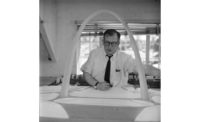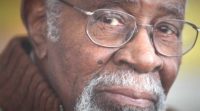Three years ago, Chicago-based writer-producer Dan Protess and host-architecture buff Geoffrey Baer collaborated on a one-hour PBS program titled 10 Buildings That Changed America. This week, Protess and Baer broaden their scope with a three-part series, 10 That Changed America, which focuses on other key elements of the built environment.
The series premieres April 5 at 8 p.m. EDT on local PBS affiliates with 10 Homes That Changed America. This is followed a week later by the second episode, 10 Parks That Changed America. The series will conclude April 19 with 10 Towns That Changed America.
“Architecture can seem like a heavy subject if you’re not interested in it,” Protess says. “But I really worked hard with [the original] program and the current series to make sure that architecture felt accessible.”
For 10 That Changed America, Protess selected topics he thought would resonate the most with the largest audiences. He says with so many people hooked on HGTV (himself included), houses were a “no-brainer.” He chose parks because he finds the work of landscape architects “inspiring” and “heroic.” And towns made sense because it gave him an opportunity to take a higher-level view of the built environment. (He also pitched a fourth show, about monuments, that was shelved.)
Such shows are only as good as the sites it presents, of course. And here Protess sought guidance from a panel of about 15 advisors (among them practicing architects and historians), which resulted in a shortlist of about 30 ideas for each episode. The long list forced him to make hard choices about which to feature and which to cut.
The prevailing criteria, though, was visual and geographic variety. And that’s very much on display in the series. 10 Homes, for example, begins at the Taos Pueblo dwellings in New Mexico before moving to Virginia, New York, California, and Chicago. 10 Parks jumps around slightly less, covering two parks in New York City and two in Seattle while accounting for spaces in the south and northeast. Similarly, 10 Towns covers two spots in the Chicago area and two in and around Washington D.C., but also bouncing around from Florida to Oregon.
“If you were to watch one hour about Fallingwater and one hour about Langston Terrace, you wouldn’t necessarily see how they connect to each other,” Protess says. “But when you see all 10 of these American homes in the same hour-long program, you see how they played off each other and fit into a larger historical context.”
This spirit of an American tapestry of architecture and design elevates the shows above a mere televised listicle. Protess and Baer want to inspire viewers to look closer at their built environments; consider the history, power, and influence of the work of architects, city planners, and urban (and suburban) visionaries; ask questions; and become more engaged in what is built. And what isn’t.
“If you want to frame it in terms of a lofty goal, we are trying to do something that will maybe raise consciousness a little bit out in the wider world” about the role architecture plays in our lives, Baer says.
“We live in a democracy where we have choices about these matters,” Protess adds. “And I think it’s important for us to better understand our built environment so that we can demand better."
Read about the destinations featured here.





Post a comment to this article
Report Abusive Comment